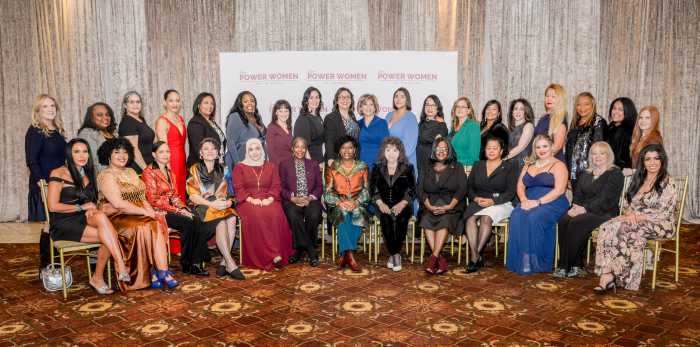 BY DUNCAN OSBORNE | Midway through “Redeeming the Dream: The Case for Marriage Equality,” authors Ted Olson and David Boies tackle an issue ignored by the two other histories of the federal lawsuit that struck down Proposition 8, the 2008 California ballot initiative that put an end to same-sex marriage there.
BY DUNCAN OSBORNE | Midway through “Redeeming the Dream: The Case for Marriage Equality,” authors Ted Olson and David Boies tackle an issue ignored by the two other histories of the federal lawsuit that struck down Proposition 8, the 2008 California ballot initiative that put an end to same-sex marriage there.
In 2009, the two superstar lawyers took up the case on behalf of a gay couple and a lesbian couple and won before Judge Vaughn Walker in federal district court in San Francisco in 2010. Prior to the case starting, Olson had boldly promised they would take the case to the US Supreme Court and win a ruling allowing same-sex marriage in all 50 states. Before the Ninth Circuit Court of Appeals, they faced a dilemma.
The three-judge circuit panel wanted them to deal with a legal issue, specifically did the groups that sponsored the ballot initiative, the official proponents, have standing to appeal the lower court’s decision? California’s governor and attorney general had declined to defend Prop 8 in Walker’s courtroom. That task was left to the proponents. If Boies and Olson won by arguing the proponents did not have standing, the circuit court would issue a ruling that applied only in California and not in the other eight states the circuit oversees. The attorneys say they were ethically required to protect the district court victory they had achieved for their clients and so they argued the proponents did not have standing.
Ted Olson, David Boies tell a story we know, black-slap each other, but don’t say what happened to their original goal
This is both correct and an honest recounting that was missing from “The Case Against 8,” an HBO film by Ben Cotner and Ryan White, and Jo Becker’s book, “Forcing the Spring: Inside the Fight For Marriage Equality,” the other two histories.
Having had that honest moment, Boies and Olson promptly take it away. They write, “And victory in California would, we believed, affect other states and courts… A standing victory overturning Proposition 8 would deliver the result we had set out in the first place to achieve.”
We know that is wrong because Olson told us in 2009 that their goal was a sweeping decision that would allow gay and lesbian couples across the country to wed. In 2013, the US Supreme Court declined to hear the case on the merits and found that the official proponents did not have standing to bring the case to the court. The result was marriage in California and only there.
Along with the HBO film and the Becker book, “Redeeming the Dream” is the third component of a campaign clearly intended to present the two lawyers, Chad Griffin, a PR expert who founded the American Foundation for Equal Rights (AFER), the group that launched and funded the Prop 8 lawsuit, and other players in the case as heroic. In all three histories, we are asked to see these people as akin to those who fought segregation and racial prejudice in the civil rights movement. What none of the creators of these histories grapples with is that Olson and Boies did not produce the victory that they promised.
Griffin, who has since gone on to head the Human Rights Campaign, the nation’s leading gay lobby, skillfully manipulated the press and public throughout the four-year-long staged event that was the lawsuit against Prop 8. With the case finished and the result known, the two books and the film look like empty spin. As with the film and Becker’s book, this is a major failing of “Redeeming the Dream.”
A second major failing of this book is that the writing is often dreadful. The 13th chapter opens with, “A petition for a writ certiorari is the formal document a lawyer submits to the US Supreme Court seeking review of a case that has been lost in a lower-level court. Certiorari is a Latin word meaning ‘to be informed of.’” Having slogged through more than 200 pages, I really did not want to go on after reading that.
The authors open chapter 14 with Olson stepping to a lectern and beginning his opening statement before the US Supreme Court. He is immediately peppered with questions. Since I know what happened in the nation’s highest court, I knew this was Olson practicing in a moot court session and I had no idea why I was reading this. The drama of a courtroom drama, which is what this book should have been, happens in the courtroom, not in moot court.
What I wanted was the inside story, the arguments, how the decisions were made. What I was told is that one party before the US Supreme Court uses a blue cover on its filing and the other party uses a red cover. And the court has “strict guidelines” on type size and word count. Olson and Boies produce some drama in chapter 15 when they recount the actual hearing before the US Supreme Court. It took the authors 238 pages to get there.
In other places, the structure is odd. Chapters two and three have the authors explaining why they took the case. This could have been done throughout the story. The book is arranged chronologically until we come to a screeching halt in chapters nine and 10 so each author can write about the other. Olson can barely contain himself. Boies is “gifted with a unique combination of charisma, intelligence, mental agility, spontaneity, focus, energy, and indefatigability, to mention just few of his qualities,” Olson wrote. No x-ray vision or other super powers? Boies describes Olson’s closing statement in the trial before Walker, saying Olson is “an exceptionally gifted and experienced oral advocate.” So no super powers there either and apparently much less to praise.
At the close of “Redeeming the Dream,” the authors give a nod to Olson’s promise, writing, “It would have been great if the Court had gone further and announced a constitutional right to marriage equality for the entire nation.” No, that was the point of this lawsuit and the authors should have confronted this in their book, but they were too busy rendering themselves as heroes.
REDEEMING THE DREAM: The Case for Marriage Equality | By David Boies and Theodore B. Olson | Penguin Group | $28.95; 313 pages

















